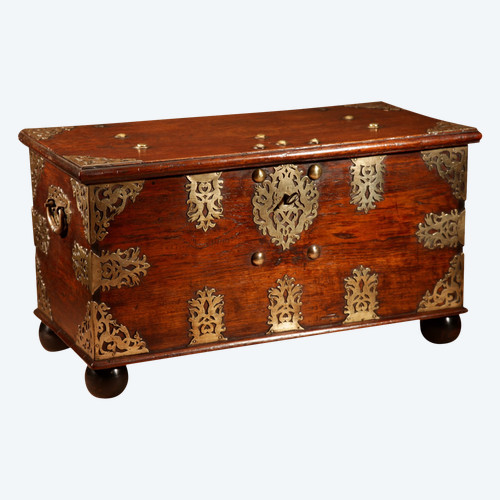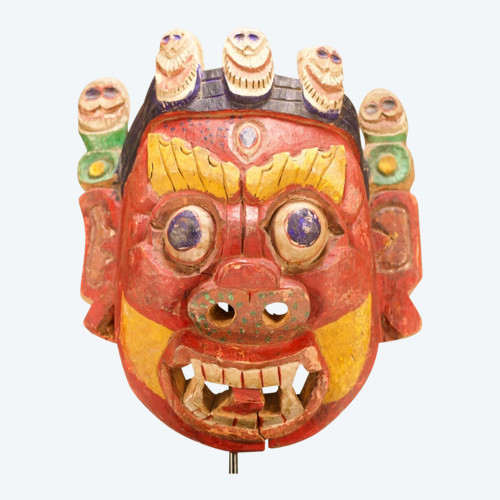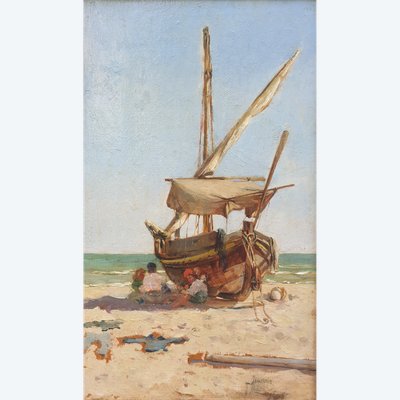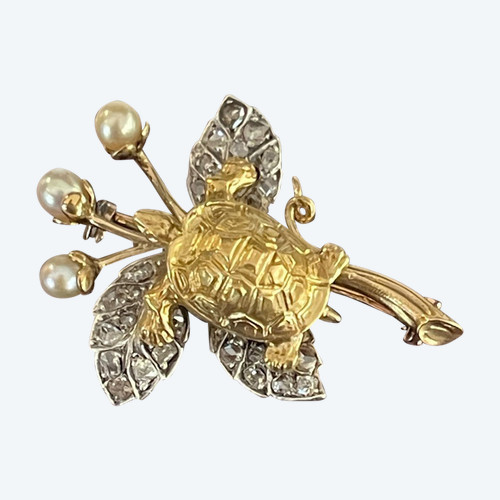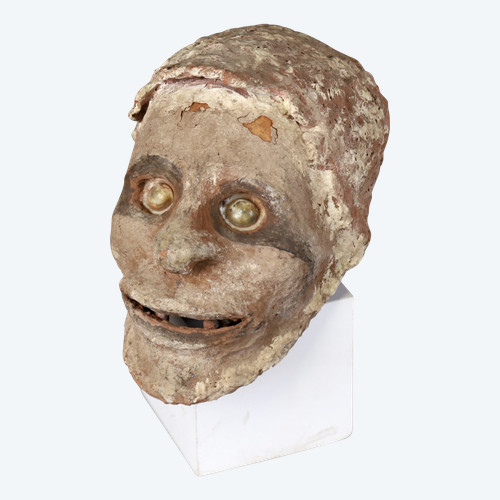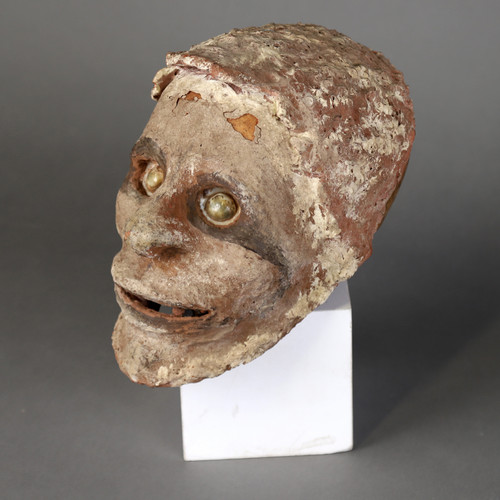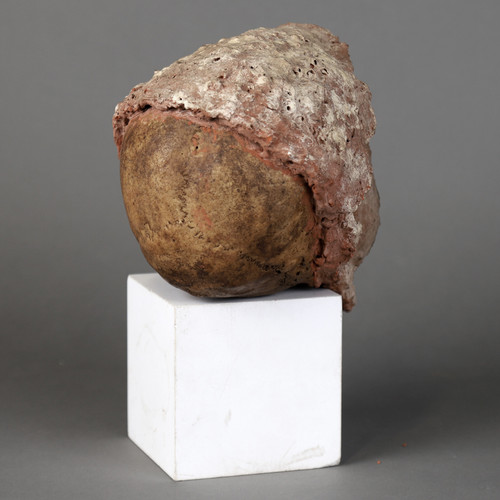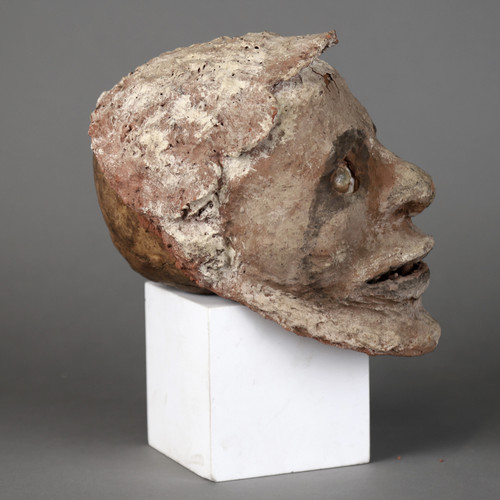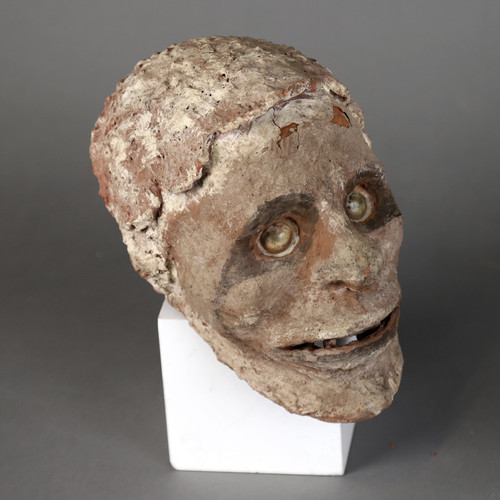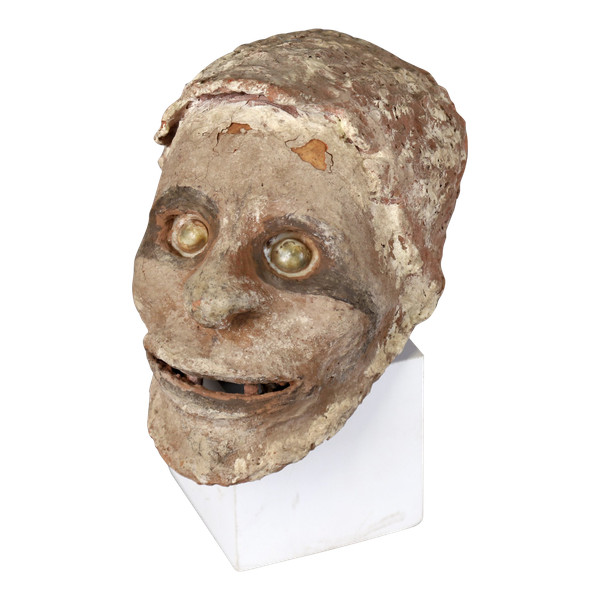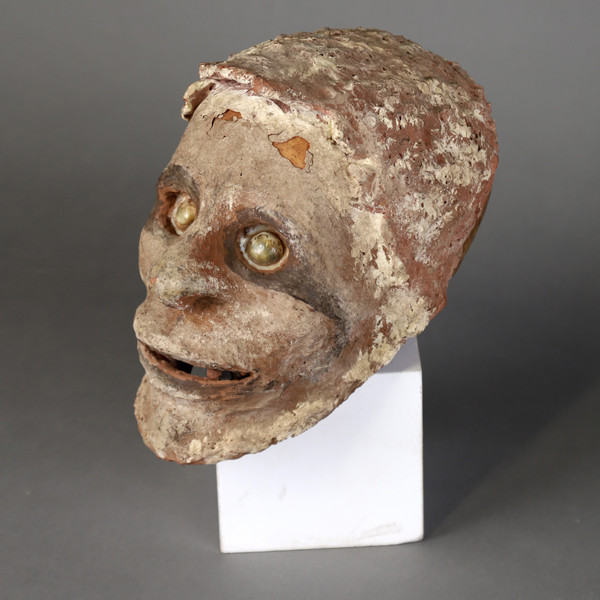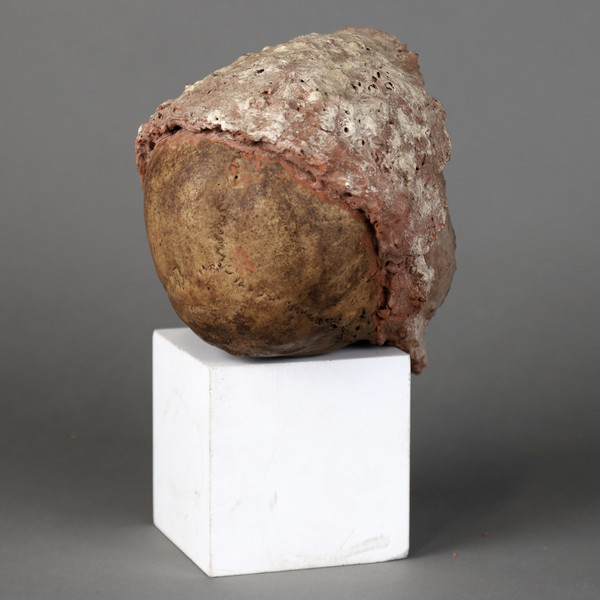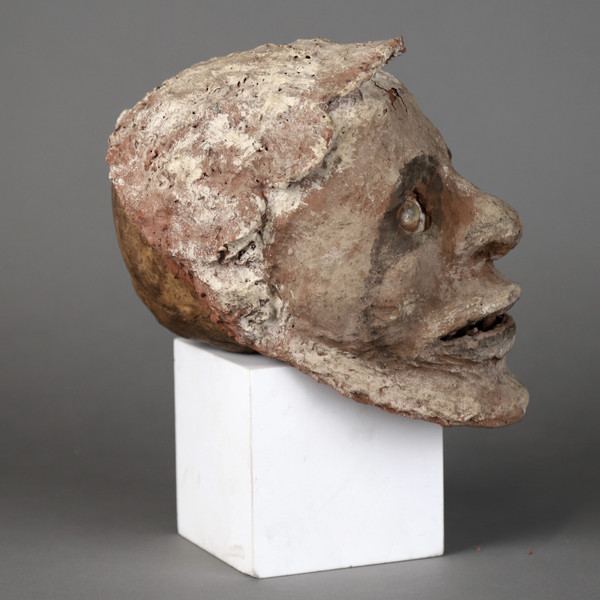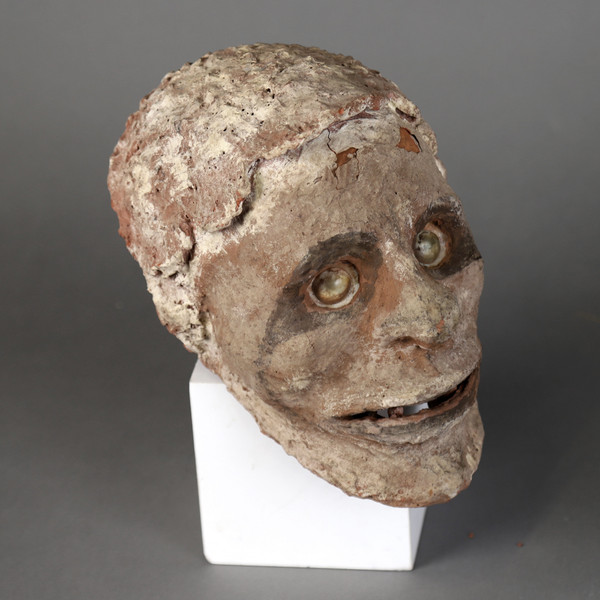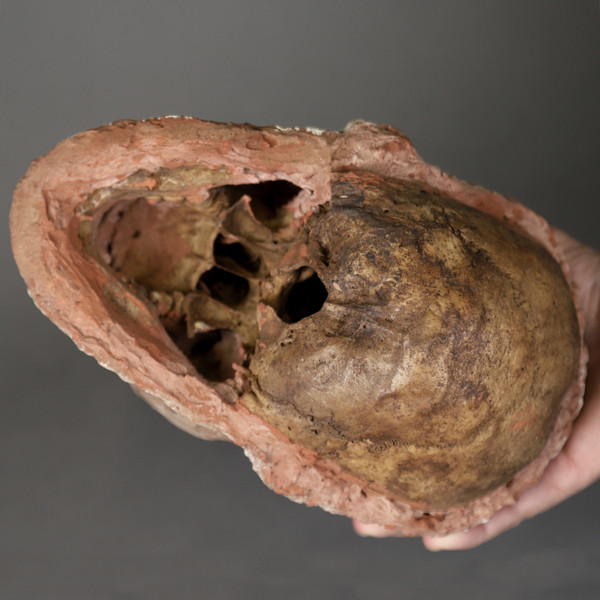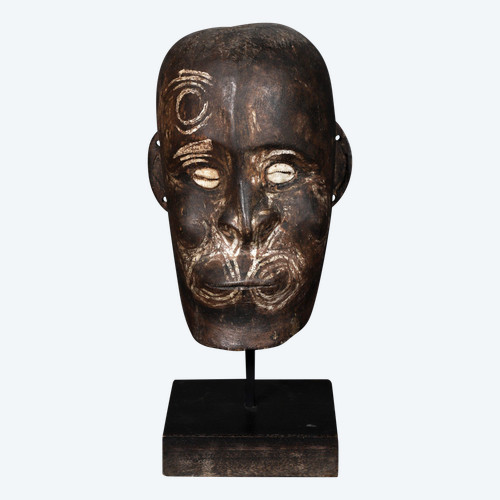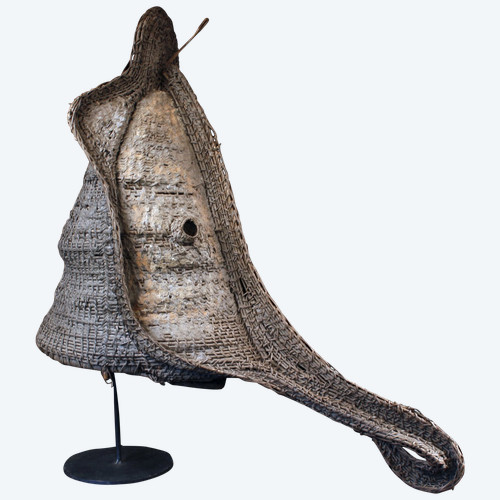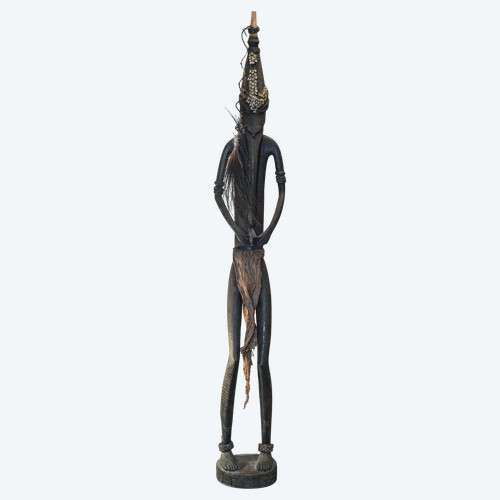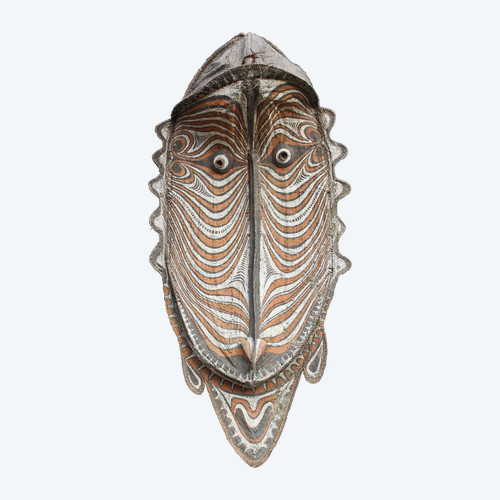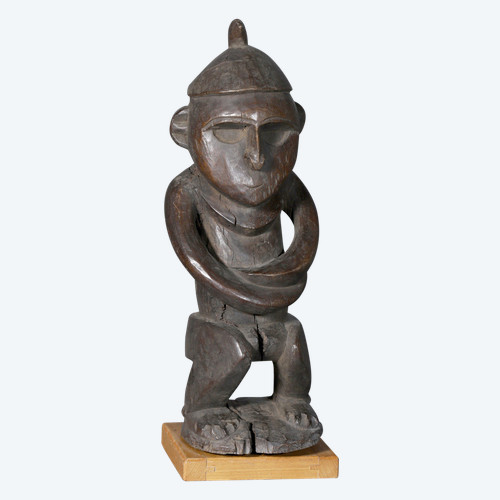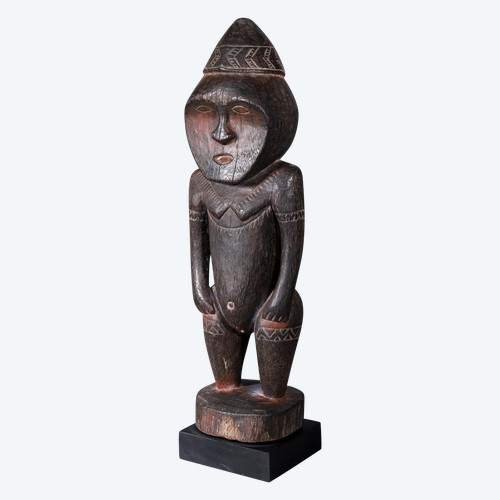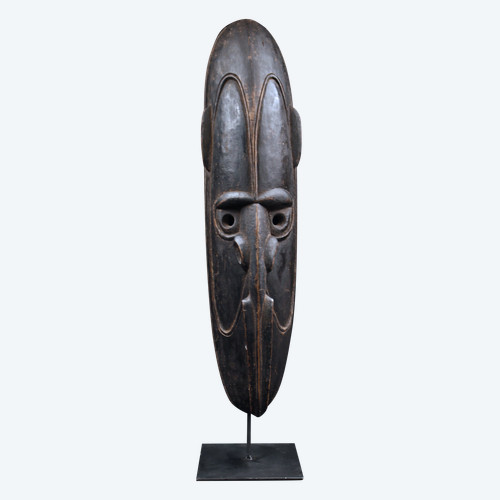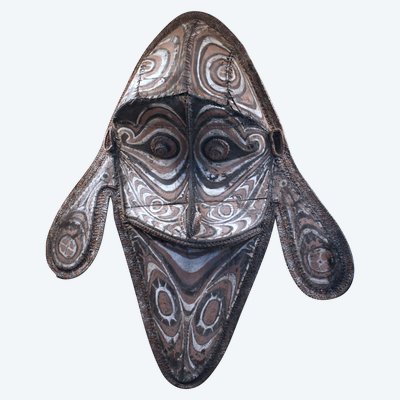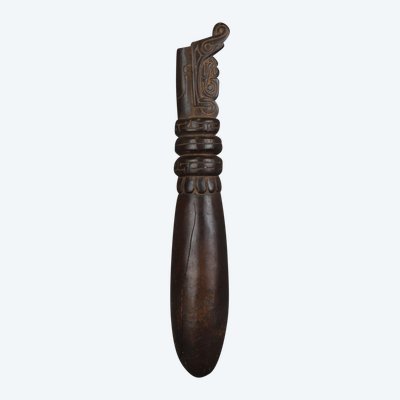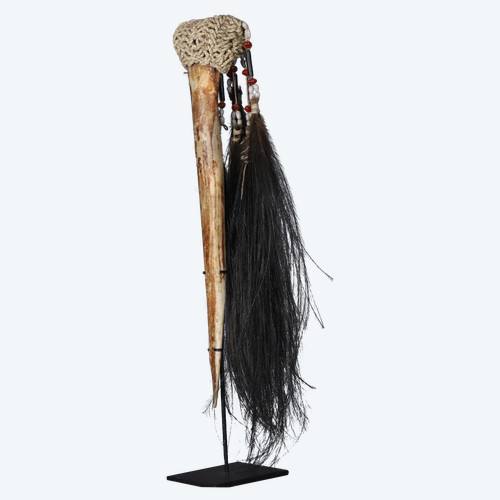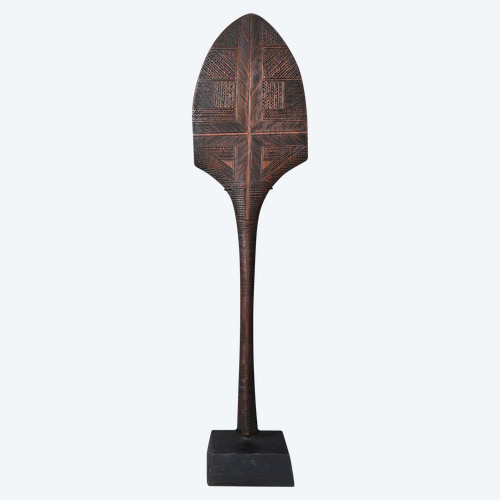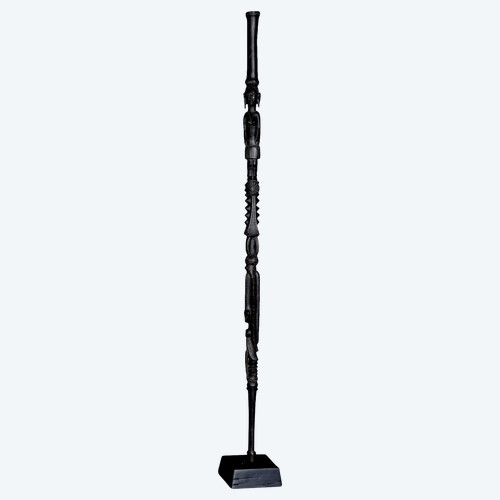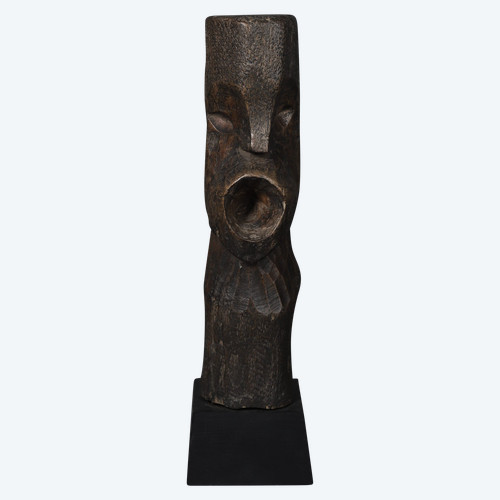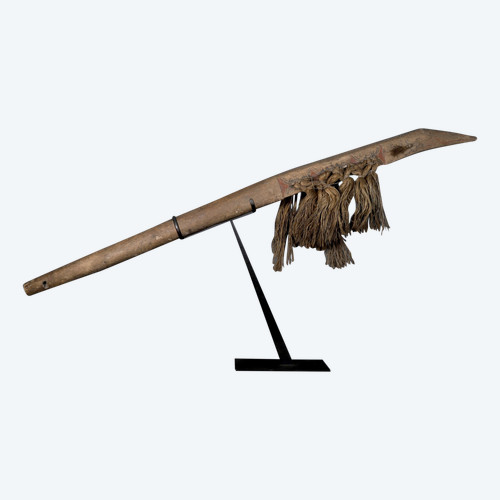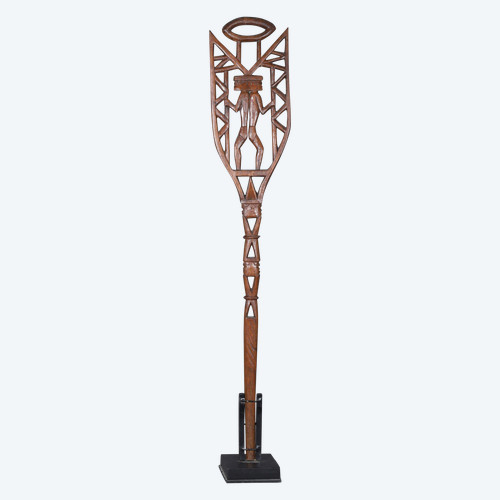This description has been translated and may not be completely accurate. Click here to see the original
Overmodeled skull – Papua New Guinea
New Ireland is a province of Papua New Guinea. Together with New Britain and other islands, it forms what is known as the Bismarck Archipelago.
In New Ireland, over-modeled skulls were used to remember dead people; they were considered representations of the ancestors: approximately two months after the burial, the skull was exhumed and modeled in order to be part of the ritual activities of a second, more elaborate funeral ceremony, accompanied by dances and songs in honor of the deceased, which could take place years later.
The overmodeled skulls were also used ritually in the uli cult, whose ceremonies were closely linked to the commemoration of important ancestors of a clan, where the transfer of power to surviving relatives and the preservation of the existing social order are central.
We can also assume that the overmodeled skulls were associated with magical rituals to cause rain. Skulls were considered mediators between this world and the afterlife. They were displayed on specially prepared altars. The ancestral spirits “present” in the skulls rested in Tridacna giga mussel shells filled with water – symbolizing fertilizing rain – and had the function of causing rain.
To decorate the facial area, beeswax was usually used (sometimes also the sticky mass of the parinarium of the rose family obtained from fruits); To shape the hairstyle and fill the eye sockets, artists used laterite, a clay containing iron oxide. The sealing caps of the sea snail Turbo petholatus form very distinctive eyes. Another feature is the wide, slightly open mouth, framed by a rounded lip.
The skull presented here offers all the characteristics of the genre, it is covered with a layer of earthy coating.
REGION: New Ireland, Papua New Guinea
MATERIAL: Bone, earth, pigment
PERIOD: 20th century
SIZE: 25 x 20 x 13 cm
Inventory number: OC032
Ref: KHYYT9TM7G
 Gold, Silver and Diamond "Turtle" Brooch
1.900 € EUR
Gold, Silver and Diamond "Turtle" Brooch
1.900 € EUR

